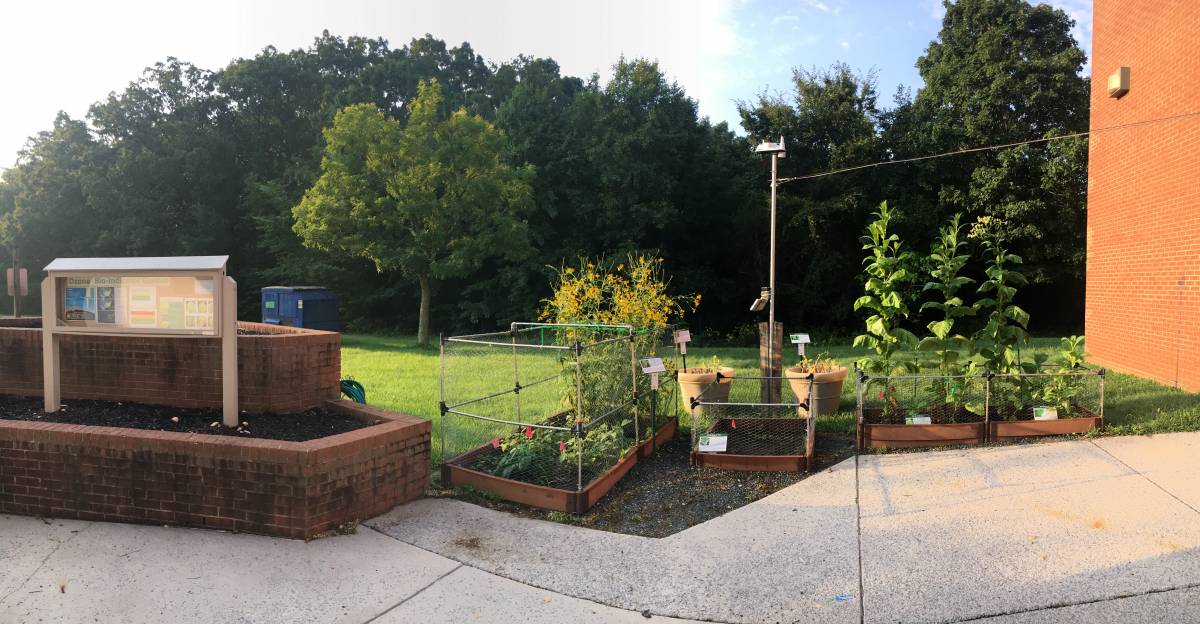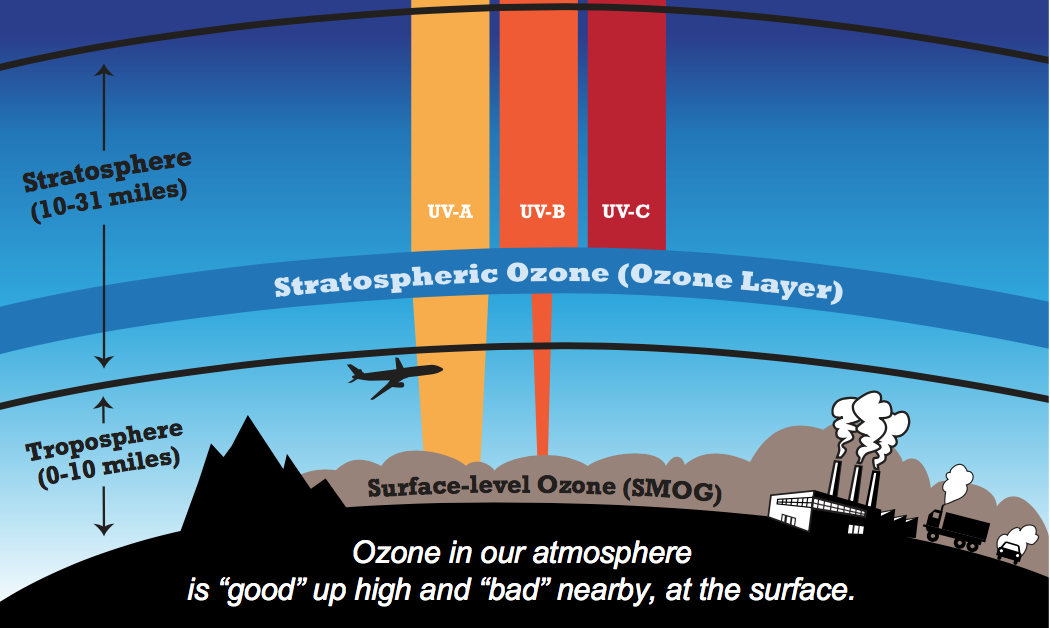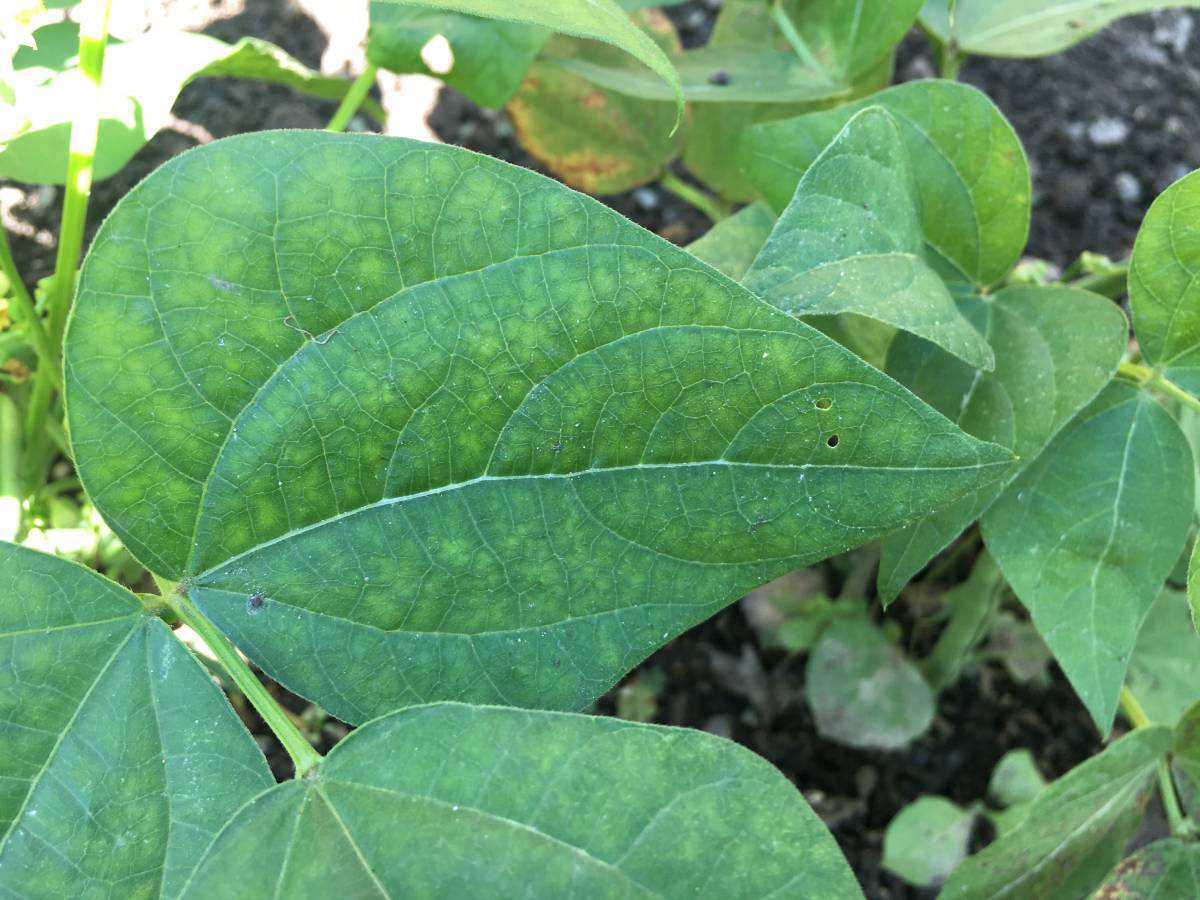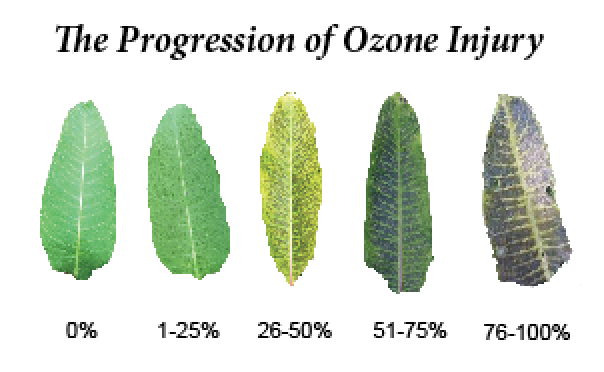***The NASA GSFC Ozone Bioindicator Garden exhibit at the Visitor Center was discontinued during the pandemic.***
Welcome to NASA Goddard Space Flight Center's Ozone Bioindicator Garden
Surface-level ozone (O3), where we live and breath, is a harmful trace gas for humans and plants. NASA Goddard Space Flight Center implemented a bioindicator garden as a communication strategy that emphasizes the adverse health impacts of surface O3 trace gases to the public and connects regional/global satellite data to local communities. The garden demonstrates observable impacts of O3 on plants and acts as a visual tool representative of O3 which cannot otherwise be seen by the naked eye. Visitors interact with the garden to learn how to identify O3 injury, which fosters a curiosity to look for O3 injury on sensitive plants in their local area. Once engaged, visitors are encouraged to take actionable steps to minimize their exposure to trace gases and reduce the formation of O3 trace gases. NASA's Ozone Bioindicator Garden at Goddard Space Flight Center's Visitor Center is part of a network of gardens across the U.S.

Surface O3 and its Health Impacts
O3 forms naturally in the atmosphere but can be "good" or "bad" depending on where it forms. Most of the atmosphere’s O3 forms up high in the the stratosphere in a layer called the “ozone layer.” This layer of O3 protects life on Earth absorbing harmful ultraviolet (UV) rays from the sun. Overexposure to UV rays can lead to cases of skin cancer, cataracts, and impaired immune systems. UV exposure can also impact food production by damaging agricultural crops.

O3 that forms near the Earth’s surface functions as atrace gas because O3 is harmful to breathe. It can contribute to a variety of health problems, such as worsened asthma symptoms, reduced lung function, and the scarring of lung tissue after repeated exposure. While O3 forms naturally, chemical reactions, initiated by sunlight and involving other trace gases released into the atmosphere, can increase concentrations of O3 to unhealthy levels. These other trace gases include nitrogen oxides (NOx) and volatile organic compounds (VOCs). The burning of fossil fuels releases NOx. VOCs are organic chemicals that evaporate easily and come from man-made sources (e.g., gasoline fumes) or natural sources (e.g., the pine scent from pine trees).
Seeing the Impacts of Trace Gases
Surface O3 adversely affects the health of both plants and humans, but on plants, the negative health implications are visible. Therefore, an O3 bioindicator garden offers a way to visualize the negative health effects of O3 on humans as we cannot see injury to our lungs.
When plants undergo photosynthesis, the stomata (microscopic pores) on the lower leaf surface open to allow carbon dioxide to enter. During this gas exchange, surface O3 trace gases is also taken up through the open stomata. When thresholds for injury are exceeded, visible symptoms soon follow and, if severe, there is a season-long reduction in plant health and ability to grow. Symptoms of O3-induced injury on sensitive plants include:
- "Stipples”: very small and variously colored dots on the upper surface of leaves; lower leaf surfaces are free of injury and appear normal green in color.
- No injury occurs on the leaf veins
- Some very sensitive plants respond with small bi-facial dead spots and more general leaf collapse.
- There is increased injury on older leaves as a result of season-long exposures.
- There may be associated chlorosis(yellowing) of leaves due to insufficient chlorophyll.
- Leaf defoliation.


In summary, O3-induced injury can be distinguished from other causes of injury, such as insects and diseases, by the distinctive upper-surface stipple and no visible injury on leaf veins, veinlets, or undersides of leaves. Symptoms are more evident following periods of high O3 concentrations, often during the mid-to late summer season, and on older leaves that have had longer exposure over a season.

For more about results from the Ozone Bioindicator Garden at NASA Goddard Space Flight Center, visit the Seasonal Updates page.
Measuring Air Quality from Space
NASA satellites measure concentrations of these NOx and VOCs "ingredients", from which scientists can estimate levels of surface O3. Although the Ozone Monitoring Instrument (OMI) on NASA’s Aura satellite cannot directly measure surface O3, it provides scientists with a global view of a key piece of the equation—nitrogen dioxide (NO2)—a component of NOx. NO2 has a relatively short lifespan, so it is concentrated near the source of its emission. As a result, when OMI detects the presence of NO2, scientists can identify and monitor its sources. When considered alongside natural and man-made sources of VOCs, concentrations of NO2 might indicate where high levels of O3 could form.
Satellite data indicate that U.S. air quality is generally improving due to environmental regulations. However, trace gases is still a significant health issue. To protect their health, individuals can limit time spent in significantly polluted areas by monitoring O3 levels in their area through the EPA’s AirNow website. It is best to stay indoors when O3 levels are unhealthy or hazardous, especially mid-day when surface O3 concentrations are typically highest.

